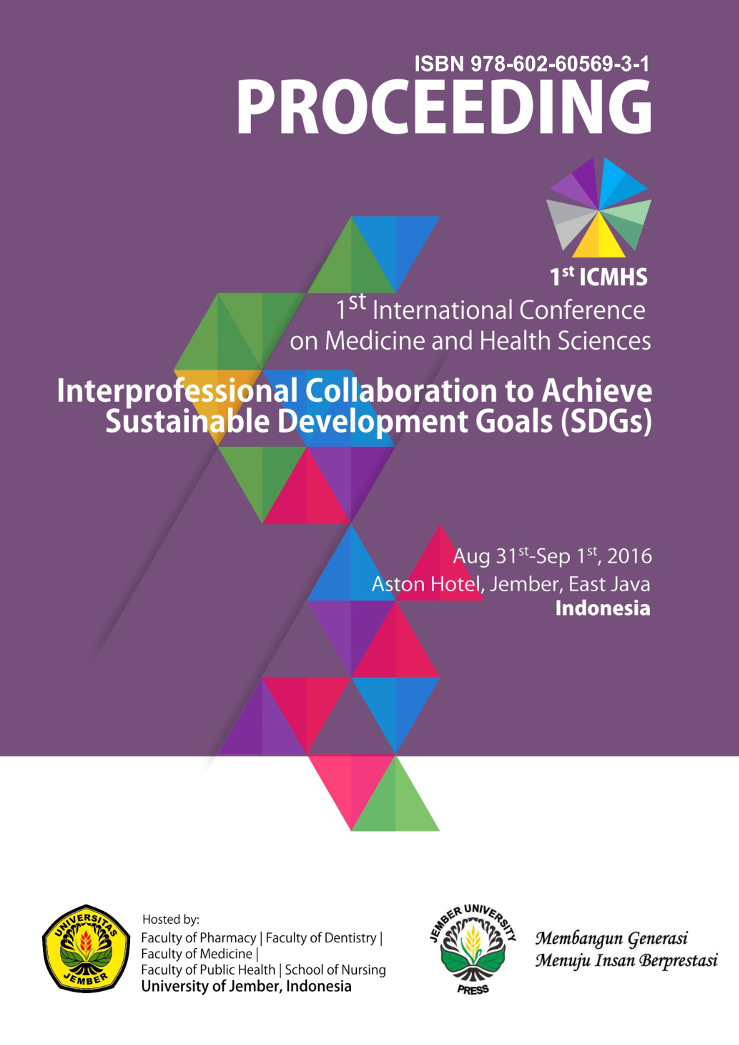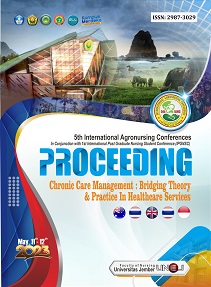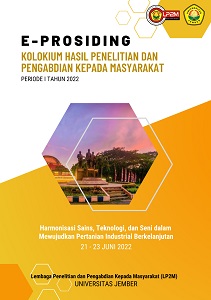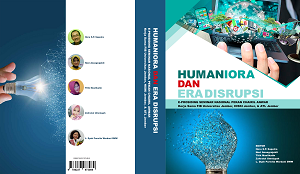LOCAL WISDOM OF JEMBER COMMUNITY IN REDUCING CYANOGENIC LEVELS TO LOWER URINE THIOCYANATE LEVELS
Abstract
Disorders caused by iodine deficiency remains aglobal health problem in the world with a prevalence
of 30.6% in 2007 (De Benoist et al., 2003; De Benoist
et al., 2008). The causing factors are not only limited
to iodine deficiency. Instead, other factors of IDD are
goitrogenic substances; one of them is thiocyanate
resulted from cyanide detoxification. The work
mechanism of thiocyanate disrupts thyroid function
by inhibiting the uptake of the iodine and interferes
with the thyroid peroxidase (TPO) activities (Gaitan,
1990; Taurog, 1970; Van Etten, 1969; Stoewsand,
1995; Virion et al., 1980 cit Chandra & Ray, 2001;
Chandra et al., 2004; Delange, 2000; Erdogan, 2003;
Gibbs, 2006; Sinebeeh, 2007; Semba & Delange,
2008). In addition, small amount of cyanide is always
available in many kinds of plants commonly
consumed by community. Goitrogenik source foods
are easily accessible by the community because the
prices are cheap or they can be self-planted (Nio,
1989; Chandra et al., 2004).
Some studies mention that most of the goitrogenic
substances do not cause clinical effects except they
are going along with iodine deficiency. Therefore,
the consumption of goitrogenic substances becomes
etiologic agent in an endemic area (Zimmermann et
al., 2008). Jember is one of regencies in East Java
which experiences an increase in TGR from 21.94%
in 2003 to 23.57% in 2007. Most of its districts are
included in the category of endemic goiter area
(Jember regency Health Department, 2007). The
results of previous studies made by the researchers
show that goitrogenic substance as a causative
factor of IDD in Jember, through one of the
indicators of urinary iodine levels, is included in the
category of normal and tend to be high. In addition,
urinary thiocyanate levels goiter group are higher
than those in non-goiter group (Ningtyias, 2006;
Ningtyias et al., 2007; Ningtyias et al., 2008).
Consumption pattern of goitrogenic source food in
Jember of at least 3-5 times per week with an
average consumption of 505 μg per day is a risk
factor of IDD in Jember (Megawati, 2007; Ningtyias
et al., 2008). The existence of these substances will
disrupt the process of the formation of thyroid
hormones; therefore, it needs to be eliminated, or
the levels are reduced, so that the food ingredients
containing goitrogenic substances are safe for
consumption. This study used local wisdom to solve
problems of nutrition, that is, one of the habits of
people in Jember to boil vegetables for fresh
vegetables for overcoming nutritional problem of
IDD because the boiling process can reduce
cyanogenic levels up to 93% (Murdiana, 2001). By
the decrease in cyanogenic levels, it is expected that
goitrogenic substance intake into the body will
decrease indicated by the decreasing biomarkers of
goitrogenic substance of urinary thiocyanate levels.
Published
2017-01-27
How to Cite
NINGTYIAS, Farida Wahyu et al.
LOCAL WISDOM OF JEMBER COMMUNITY IN REDUCING CYANOGENIC LEVELS TO LOWER URINE THIOCYANATE LEVELS.
UNEJ e-Proceeding, [S.l.], p. 229-233, jan. 2017.
Available at: <https://jurnal.unej.ac.id/index.php/prosiding/article/view/3939>. Date accessed: 22 dec. 2024.
Section
General









